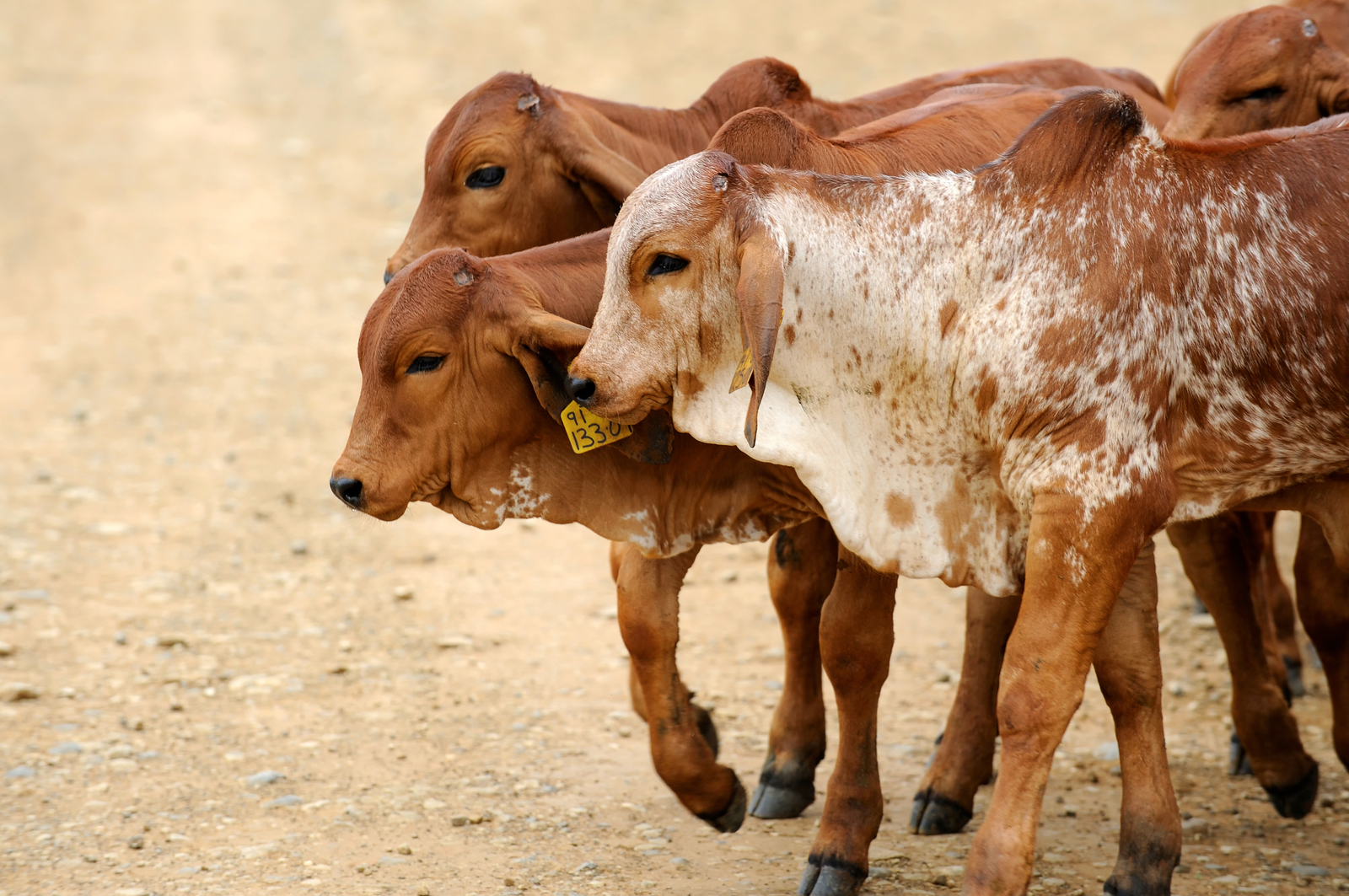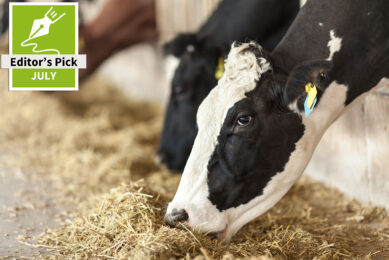Reducing methane with efficient feeding

Ruminants contribute significantly to the total methane output. Factors driving emission intensity levels are found in the way we feed the animals. “By improving the digestibility of diets, a further increase can be stopped”, says researcher Theun Vellinga.
By Emmy Koeleman
The demand for bovine meat, mutton and milk is forecasted to grow at a rate of 1.2 %, 1.5 % and 1.1%, respectively, during the period 2006-2050. At the same time, the production of animal protein comes with the production of greenhouse gas (GHG). As stated in the report: Greenhouse gas emissions from ruminant supply chains – A global life cycle assessment, published by the Food and Agriculture Organization of the United Nations (FAO), the ruminant supply chains are estimated to produce 5.7 gigatonnes (billion tonnes) CO2-eq per year, representing about 80% of the livestock sector emissions. The primary greenhouse gases in the Earth’s atmosphere are water vapour, carbon dioxide, methane, nitrous oxide, and ozone. The largest source of GHG emissions in ruminant production is methane (CH4) coming from enteric fermentation. This accounts for about 47% of the sector’s emissions and more than 90% of the total methane emissions. Feed production in turn also contributes significantly to the nitrous oxide output and N deposited during grazing represent 24% of the sector’s GHG emissions. “Methane is the real bad guy as this gas is a 25 times stronger greenhouse gas than carbon dioxide (CO2), in a timeframe of 100 years. In the short term, methane is even more aggressive. So reduction of methane is very important” explains Dr. Theun Vellinga, researcher at the Wageningen UR Livestock Research in the Netherlands and contributor to the FAO report.
Increase feed digestibility
Generally, milk production in low productive systems has higher emission intensities than in high production systems of most affluent counties where better animal feeding and nutrition results in lower enteric and manure emissions and emission intensity at animal level. The variations in emissions are driven by differences in production goals (specialised versus non-specialised production) and management practices, including animal husbandry methods, animal health and genetics which influence levels of productivity. Data from the FAO report showed that average emission intensity for products from ruminants are 2.8, 3.4 and 6.5 kg CO2-eq/kg fat and protein corrected milk (FPCM) for cow milk, buffalo and small ruminant milk, respectively, and 46.2, 53.4, and 23.8 kg CO2-eq/kg carcass weight (CW) for beef, buffalo and small ruminant meat, respectively. Not only differences in production goals and genetics attribute to this, there is also a huge variation in the digestibility of the feedstuffs around the world (Table 1). Vellinga: “Improvement of digestibility (parallel to improvement of protein contents) is therefore extremely important to increase the efficiency of producing animal proteins. Because when feed intake increases, methane emissions will increase as well, but the production will increase much more. This means that we can produce the same amount of milk and meat with less animals, or produce much more with slightly higher emissions. A simple calculation showed that an increase of 10% units digestibility reduces emissions per kilogram of milk and meat by 25%”, explains Vellinga.
Room for improvement
In decades to come, the global demand for livestock products will continue to increase driven by growing populations, incomes and urbanisation. As a consequence the sector needs to produce more but in a context of increasing natural resource scarcity and challenges posed by climate change. Despite the fact that the ‘global warming’ discussion is mainly argued in industrialised countries, there is especially room for improvement in the developing countries. The first step is to improve availability and quality of feed. That is at the moment the most limiting factor and animals in developing countries can perform much better with enough and good feed. Genetics will play a role on the longer term, when the feeding management is at a higher level and the animal properties are the limiting factor. Vellinga: “When we do nothing, GHG emissions will increase linearly with the production volume. With mitigation we are to reduce the increase strongly. According to the latest FAO assessment, approximately 30% reduction of the current emissions is possible. It is hard to say whether total emissions of livestock will decrease as this depends on the actual growth of the sector in the future”.
Ruminomics: cutting-edge science to reduce emissions from cattle
Changed diets will affect methane production directly, but better genotypes alongside better diets will create a positive synergy for lower emissions. A new research project named RuminOmics will approach the issue of lowering emissions by connecting the animal genome, gastrointestinal microbiomes and nutrition. The project, financed by the European Union and consisting of eleven European research institutes, want to understands how much the host ruminant influences and controls the microbial population in the rumen. This information can be used to develop breeding programmes in the future for the selection of more efficient animals that are less polluting, more productive, and more profitable for the farmer. The project will also develop new models and tools to enable the livestock industry to decrease environmental damage from methane and nitrogen emissions, and to improve efficiency of feed utilisation. www.ruminomics.eu
[Source: AllAboutFeed magazine Vol 22 nr 2, 2014]











